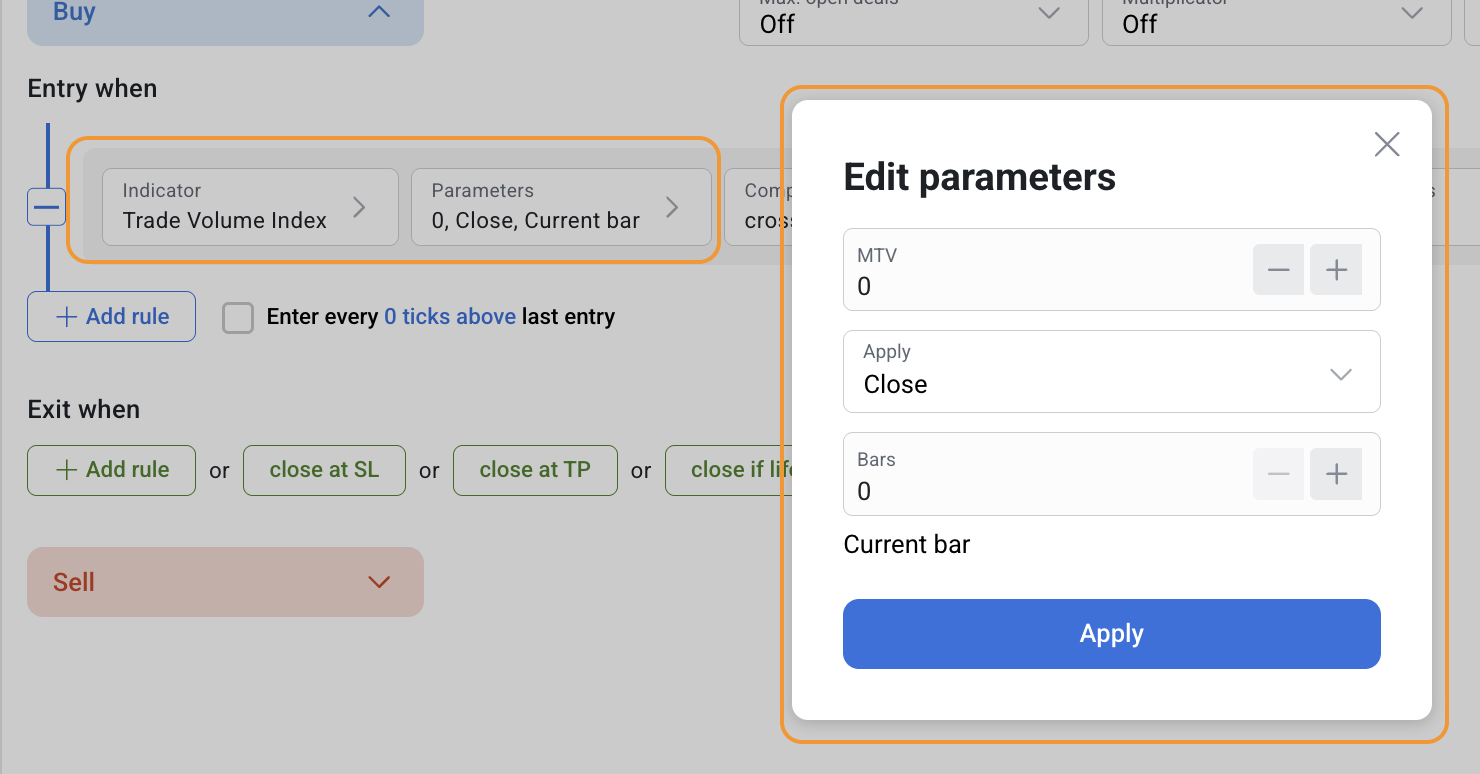Overview
Trade Volume Index determines whether a security is bought or sold by calculating the quantity of Cash in Flow and Cash out Flow for that particular security during a specified period of time. Contrary to many technical indicators, the Trade Volume Index is determined on the basis of Intraday Price Values. The Indicator is based on the assumption that buying pressure rises when Price approaches Ask Price and Selling Pressure rises when Price nears the Bid Price. The outcome of Trade Volume Index is Accumulation (Purchase) or Distribution (Sale) trend for an underlying security. TVI is the short form of Trade Volume Index. TVI uses Volume as well as Price in its formula. As its name signifies, TVI indicates the amount of a security purchased or sold. The Day Traders frequently uses TVI because it uses Intraday Price Data. This doesn’t mean at all that other traders don’t use or prefer TVI over other Technical Indicators.

Description
The Trade Volume Index is works on the Intraday Tick Prices to determine direction and speed of a trend. Similar in style to On-Balance Volume Method, the TVI identifies whether a security is accumulated or distributed. Here accumulated means Purchased and Distributed signifies a selling trend. The main difference between the two methods i.e. Trade Volume Index and On Balance Volume is that, OBV uses end of day data to calculate price trends whereas TVI utilizes the intraday prices data to predict the trend.
OBV fails to predict trend when prices don’t change much from their previous day close. This designs a flat level of both support and resistance on the chart. On the other hand, TVI holds good even in slightly changing prices. Reason behind it is that, first of all TVI determines whether a security is bought or sold. After determining it, the next step is to determine the direction of trend i.e. up or down. If the TVI is going up, it means transactions are conducted on asking price because buyers are accumulating price.
On the other hand, if TVI goes down, it means the stock is traded on Bid Price because traders are distributing that particular security. Similarly, when prices trend up flat on resistance, but the TVI is rising, prices tend to breakout in upside direction. Contrarily, if TVI is falling with flat resistance level, the prices tend to fall below support level.
To find out more about this indicator and it`s trading signals click here.
Settings in the chart


Settings in Strategies

Trade Volume Index can be used both separately and together with other indicators in the RoboBuilder.